A learning management system (LMS) is a software that centralizes, delivers, tracks, and manages educational content for training team members, clients, and business partners.
Organizations are constantly seeking effective ways to train their teams, create growth, and enhance engagement. Many companies rely on learning management systems (LMSs) to streamline and enhance their training and development efforts. These platforms provide a centralized hub for learning—simplifying access and helping businesses deliver training programs that support their people.
Their versatility makes them invaluable to HR teams, who can use them for onboarding, compliance training, upskilling, leadership development, and more. This article will define what LMSs are, how they work, and why businesses should care about them.
<< Learn how to determine the ROI of your learning management system. >>
LMS definition: What are learning management systems?
A learning management system is a type of software that companies use to train and educate team members, clients, and business partners. Traditionally, work training programs would happen in person over a few hours or days, but LMS technology streamlines this learning process.
It provides a one-stop shop for educational content, offering learning options including videos, programs, courses, quizzes, and guides. The content can be live or recorded so individuals in different locations, time zones, and companies can easily access it.
Companies use LMSs to:
- Create informational content
- Organize it in a centralized digital location
- Deliver it directly to the targeted audience
- Monitor learning progress
- Facilitate learning collaboration
How do learning management systems work?
Learners and instructors access learning management systems by creating user accounts. These platforms may have pre-built courses or allow organizations to build their own.
An LMS usually generates reports on learner performance and course effectiveness so management can track progress. Administrators can use this data to make improvements.
<< Download this free LMS implementation checklist for a smooth transition. >>
Why should HR leaders care about a learning management system?
An LMS promotes professional growth in the workforce—propelling the company forward toward reaching its business goals. It’s a strategic solution for building a more skilled and engaged team. An LMS offers structured learning opportunities and tracks progress, helping HR leaders address skill gaps, enhance team performance, and boost retention.
Here are some benefits a learning management system offers:
Improved onboarding processes
A learning management system transforms the onboarding process into a seamless and efficient experience. Instead of relying on scattered resources, HR leaders can provide new joiners with easy access to all the onboarding and training materials they need in one place. This ensures consistency in how people are introduced to the company and helps prepare them to excel in their roles.
Continuous learning opportunities
Learning shouldn’t stop after onboarding. With a robust LMS, HR leaders can provide ongoing training that keeps skills sharp and ensures team members have up-to-date knowledge of their field. Whether through certifications, advanced courses, or upskilling initiatives, an LMS empowers people to grow within their roles and adapt to changing industry demands.
<< Use this free employee development plan template to drive success through learning. >>
Stronger engagement through learning
Interactive and personalized learning experiences can make all the difference when it comes to engagement. Features like quizzes, gamification, and progress tracking keep people actively involved in their development. With an LMS, learning becomes more than just a requirement—it becomes an opportunity for growth and achievement.
Increased retention
Investing in people’s development sends a clear message: growth matters. With the right LMS, teams can deliver training that aligns with individual career goals, keeping professionals engaged and inspired. When people feel they’re making progress in their careers, they’re 20 percent more likely to be at the company in the following year—and that’s how lasting cultures of growth are built.
Optimized costs
The costs of traditional training methods, like in-person sessions and printed materials, can quickly add up. An LMS eliminates many of these expenses by digitizing the entire learning process. This not only reduces costs but also makes scaling training programs across teams and locations much simpler.
Beyond immediate savings, an LMS supports long-term cost efficiency. Upskilled team members become more productive and deliver higher-quality work, reducing the need for constant hiring and onboarding. As a result, organizations benefit from a more capable, stable, and motivated workforce—further driving down the hidden costs of turnover and inefficiency.
Easier team building
An LMS isn’t just for individual learning—it’s also a platform for collaboration. HR leaders can create opportunities for team members to connect and work together by encouraging group training sessions or shared learning paths. This collaborative approach promotes a sense of community and strengthens team dynamics.
<< Learn how to calculate and improve your LMS ROI. >>
Common learning management system features and components
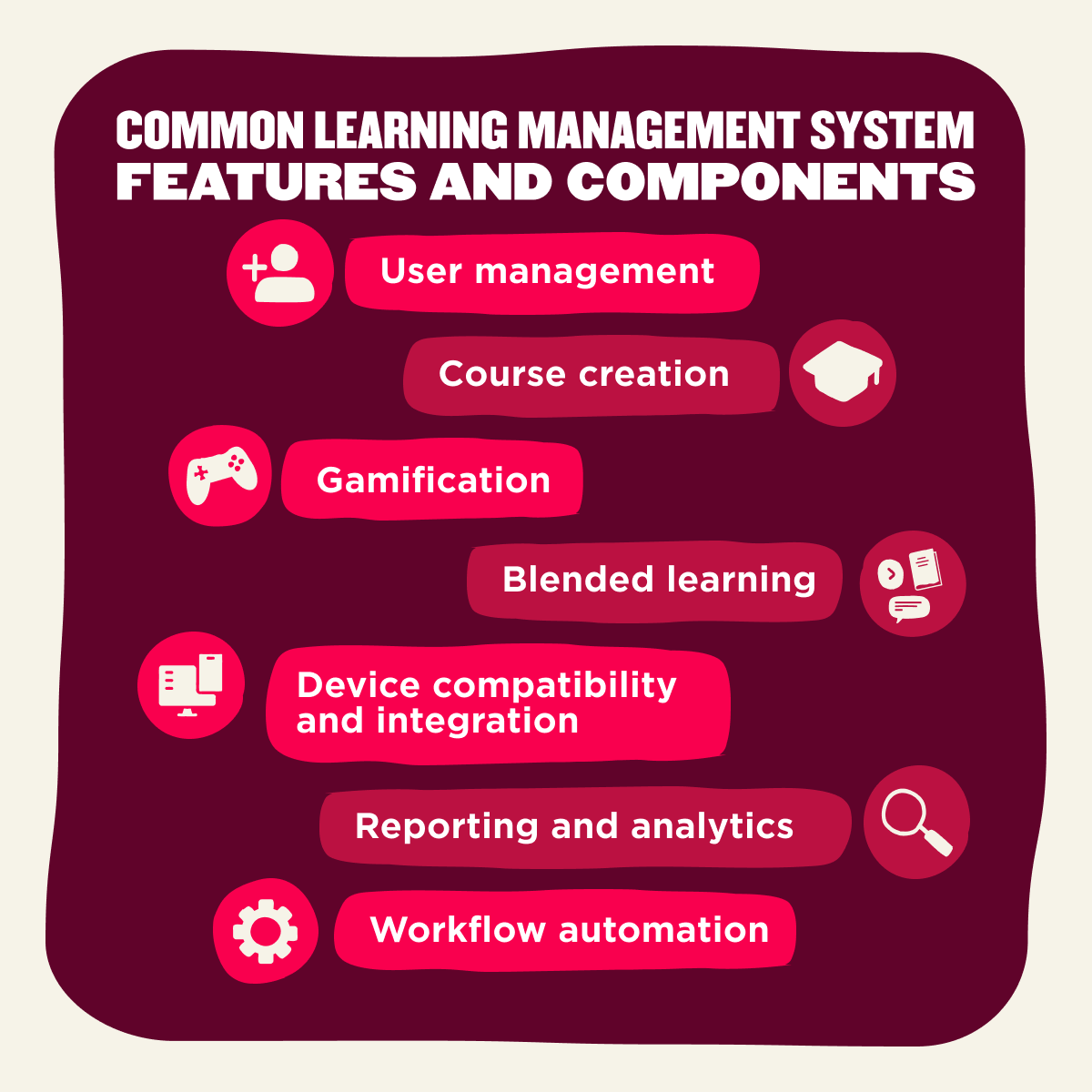
LMSs vary depending on the needs of the organization. They offer a wide range of features designed to enhance the learning experience and streamline administrative tasks. Some common features and components include:
User management
Administrators can oversee user profiles, roles, and permissions. This ensures learners have access to the courses and materials relevant to their role while protecting sensitive content from unauthorized access. It’s a simple way to keep learning personalized and efficient for everyone.
Course creation
Instructors can use an LMS to develop courses that are both structured and engaging. The platforms support a variety of content types, such as videos, presentations, and interactive quizzes, enabling instructors to create meaningful learning experiences.
Instructors can start by outlining clear course objectives, such as specific skills or knowledge students will gain. They can also upload relevant materials, like lecture slides or video tutorials, and design interactive assessments, such as multiple-choice quizzes or scenario-based activities, to reinforce learning.
Using built-in tools, instructors can assign tasks with deadlines, set up automated grading for quizzes, and provide detailed feedback on assignments, making the course creation process efficient and effective.
Reporting and analytics
An LMS provides actionable insights through detailed reports on learner progress, completion rates, and assessment scores. When selecting a system, look for features like customizable reporting, real-time analytics, and intuitive dashboards. These features give HR leaders and managers the information they need to identify trends, address skill gaps, and refine training programs for maximum impact.
Device compatibility and integration
With mobile-friendly LMS platforms, learning doesn’t have to stop at the desk. Team members can access courses and educational materials on their smartphones or tablets, whether they’re in the office or working remotely.
A strong LMS integrates with the tools your organization already uses, such as human resource information systems (HRIS), payroll software, and performance management systems. These integrations help maintain consistent data flow across platforms, simplifying administrative processes and helping HR leaders connect learning initiatives with broader organizational goals.
When choosing a platform, consider its compatibility with your existing systems, the ease of integration, and whether it supports your current workflows and reporting needs.
Workflow automation
Automation in an LMS takes care of repetitive tasks, like enrolling new team members in mandatory training or sending reminders for incomplete courses. Reducing manual effort helps HR leaders focus their time and energy on developing impactful learning strategies that drive success.
Look for features like customizable automation workflows, robust reporting tools, and seamless integration with existing HR software to ensure it meets your organization’s specific needs.
Gamification
Gamification makes learning more engaging by incorporating elements like points, badges, and leaderboards. These features encourage friendly competition and reward progress, motivating learners to stay committed and complete their courses. It’s a practical way to make learning enjoyable while building a sense of achievement.
Blended learning
Blended learning combines the best of both worlds: online courses and in-person training sessions. This approach caters to different learning preferences, providing flexibility while ensuring comprehensive skill development. With a robust LMS, HR leaders can manage both formats in one place—coordinating independent online modules with in-person trainings to reinforce concepts, encourage hands-on application, and support peer collaboration. The result is a cohesive, scalable learning experience that meets diverse workforce needs.
<< Use this LMS request for proposal template to simplify your decision. >>
Learning management systems deployment methods
Deployment methods refer to how an LMS is set up and hosted. Finding the right fit ensures your LMS aligns with your goals while remaining flexible enough to adapt as your needs evolve. This is a critical consideration when choosing an LMS, since it impacts everything from scalability and data control to user experience and long-term costs.
Here are a few deployment options to consider when you’re evaluating learning management systems:
- Open-source LMSs: Open-source LMS platforms are highly customizable and free to use, making them a flexible option for organizations that want a tailored solution. These systems allow companies to modify the platform’s code to meet specific requirements, offering nearly unlimited possibilities. However, open-source LMSs often require significant technical expertise for setup, maintenance, and updates, so they’re best suited for organizations with dedicated IT resources.
- Cloud-based LMSs: Cloud-based LMSs are hosted online, making them accessible from anywhere with an internet connection. These platforms are easy to scale as your organization grows and typically come with provider-managed updates, security, and support. This reduces the administrative workload for internal teams. Cloud-based LMSs are ideal for organizations needing flexibility and convenience, especially those with remote or hybrid teams.
- Hosted LMSs: Hosted LMSs are installed on an organization’s local servers or hardware, giving the company full control over the system. This deployment method is often chosen by organizations with strict data privacy requirements or those operating in highly regulated industries. While hosted LMSs provide a greater level of control, they also demand more resources for maintenance, updates, and troubleshooting. For companies with the technical expertise to manage it, this method offers a secure and customizable solution.
How to choose the best learning management system
The right LMS should align with your goals, support your team’s growth, and adapt as your organization evolves. Here’s what to consider:
- Define your objectives. Clearly outline your learning objectives and the desired outcomes.
- Assess scalability. Consider whether the LMS can accommodate your current and future needs.
- Consider your budget. Determine your budget for the LMS, including initial setup costs and ongoing maintenance fees.
- Ensure a user-friendly interface. Ensure that the LMS has an intuitive interface for both administrators and learners. Usability is crucial for adoption.
- Check content compatibility. Check that the LMS supports the types of content you plan to deliver, such as multimedia and interactive elements.
- Test integration capabilities. If you plan to integrate the LMS with other systems, make sure it’s able to work with them.
- Assess LMS training and support. Evaluate the level of training and support provided by different learning management system vendors.
<< Download a complete LMS RFP template to help you choose the right LMS. >>
How to successfully implement a learning management system
Here are a few key strategies to help align your LMS with business goals, encourage adoption, and support people at every stage of their professional growth.
Find the right LMS for your people
Start by identifying the specific challenges you want to address—whether it’s streamlining onboarding, providing continuous learning, or improving engagement. Then, consider how your people learn best.
Understanding different learning styles can help you select an LMS that supports various approaches—from video-based content to interactive quizzes—to make learning more impactful for everyone.
Promote the LMS internally
For an LMS to succeed, it needs buy-in from the entire organization. Communicate the value of the LMS by explaining how it will support people’s development and enhance their day-to-day work. Preparing people early—through demos, training sessions, or FAQs—can help ease concerns and build excitement around the new system.
Features like badges, points, and leaderboards can also motivate people to explore the platform. Offer small incentives, such as recognition or rewards for completing courses.
Gather feedback
Asking for input from people using the LMS can highlight what’s working and what isn’t. This allows HR leaders to make improvements that enhance usability and relevance.
Consider using surveys or informal check-ins to gather insights. Ask questions about ease of use, the quality of the content, and any areas where they feel the platform could improve. Acting on this feedback shows people their opinions matter and helps create a system tailored to their needs.
Check in with managers
Managers play a key role in driving LMS adoption. Encourage them to promote learning actively within their teams and highlight the benefits of the platform. You can empower managers to lead by example by helping them with early adoption. This may include providing training, sharing best practices, or offering tips on how to encourage their teams to engage with the platform.
Regular check-ins provide an opportunity to understand how well the system works for their teams. When managers are confident and well-informed, they’re more likely to inspire their teams to embrace the LMS.
Fuse the LMS with traditional learning
While an LMS is a powerful tool, it doesn’t need to replace traditional learning methods. In-person training sessions, workshops, and on-the-job training still have tremendous value. These methods can complement the LMS by offering hands-on experiences and encouraging collaboration.
Blending the two approaches creates a more dynamic learning environment. For example, you might use the LMS to provide pre-workshop materials or track progress after an in-person session. This combination ensures people get the best of both worlds—flexible, self-paced learning alongside the benefits of face-to-face interaction.
<< Download this LMS implementation checklist for a seamless rollout. >>
Best learning management systems
An HR learning management system can have a wide range of uses. Below are some examples of LMS platforms that can support your people’s growth.
Disclaimer: The opinions expressed here are solely those of the author and do not necessarily reflect HiBob’s views. Prospective users are encouraged to conduct their own research to make the best decision for their organization.
Bob
Bob is an HR platform designed to help streamline and optimize people management, with tools for onboarding, time tracking, payroll, and more. Bob Learning simplifies and enhances how HR leaders manage learning and development. It enables organizations to deliver tailored training experiences, track progress, and offer continuous skill-building experiences.
Bob’s intuitive platform helps HR leaders build a culture of continuous learning with effortless course creation, easy personalization for individual learning experiences, and dynamic content and learning options to empower learning on the go.

Key features:
- Personalized learning paths for team members
- Performance tracking and actionable insights with Bob Learning dashboards
- Integration with HiBob’s suite of HR tools for streamlined workflows
- Easy-to-navigate design for all users
- Integration with third-party content providers like LinkedIn Learning and Udemy Business
Ideal for: Keeping learning in the flow of work and aligned with employee lifecycle events
<< Learn more about how Bob Learning can optimize your people’s learning experiences. >>
360learning

360learning is an end-to-end learning platform for collaborative learning. Its unique collaborative learning approach helps organizations utilize internal expertise for effective peer-to-peer learning and rapid upskilling. The platform’s integration with HiBob ensures a smooth experience, aligning learning goals with broader HR strategies.
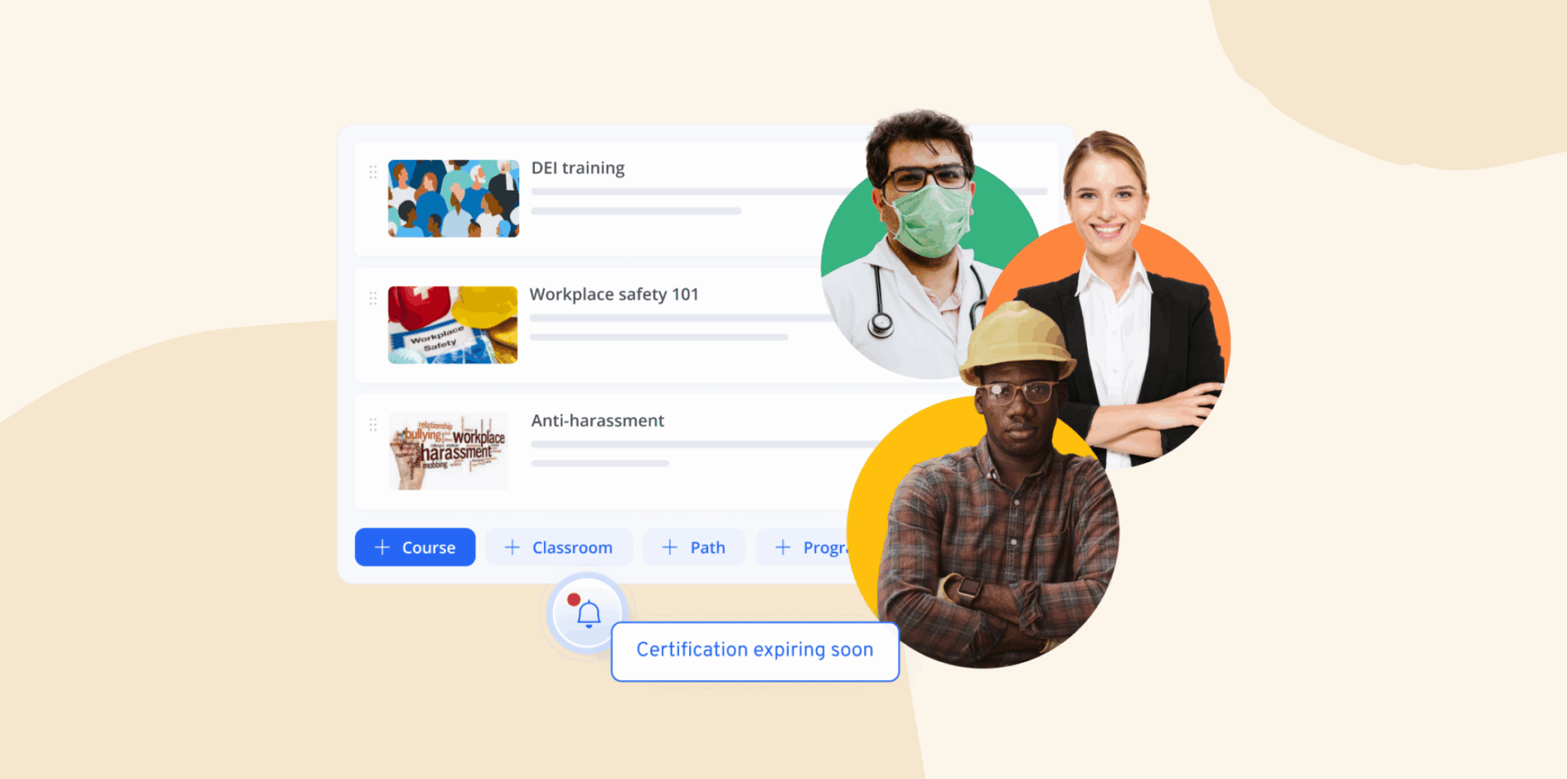
Key features:
- AI skill identification automatically determines which internal experts are a good match for people’s learning needs
- Real-time feedback loops for continuously relevant training
- Collaborative course creation with experts to speed up development
- Advanced reporting and analytics for insights into learning progress and skill development
Ideal for: Creating learning content for various teams, including sales and compliance
Explore Bob’s integration with 360learning here.
Azumor

Azumor offers a holistic approach to learning and to each stage of the employee lifecycle. The Azumor Learn LMS was created for subject matter experts (SMEs) to train and upskill staff 24/7 on any device. It works seamlessly with Bob to meet diverse learning needs, allowing you to create content, leverage pre-built courses, and track people’s progress.
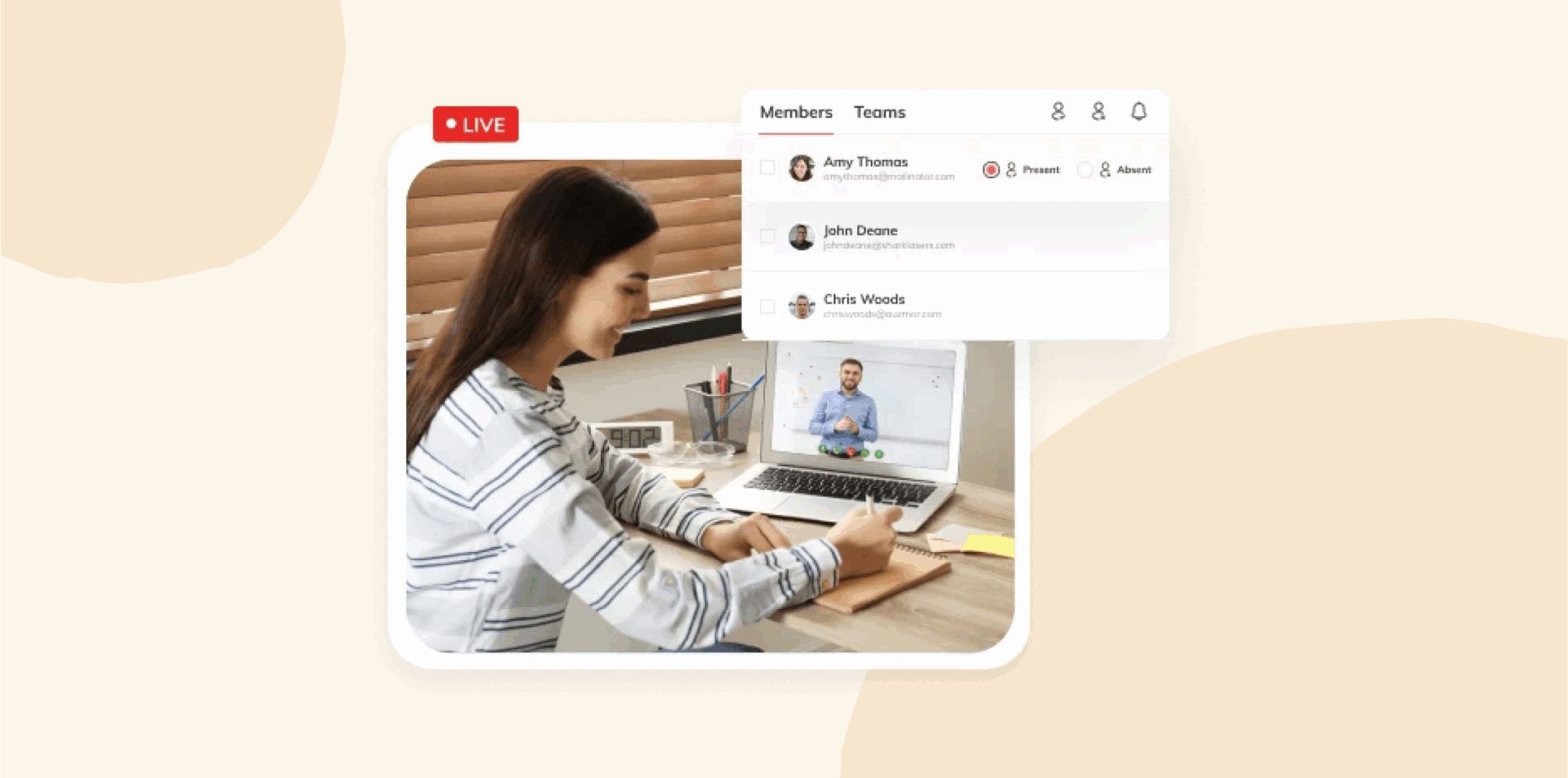
Key features:
- Simplified course creation for faster, easier learning content delivery
- Automated course assignment to learners based on criteria like job role, department, or location
- Detailed analytics reporting for user training progress and company learning trends
- Direct integration with HiBob’s HR platform for synchronized data flow between HR and learning systems
Ideal for: Improving compliance training and employee development
Learn more about the HiBob and Auzmor integration.
Eloomi

Eloomi is a simple and scalable learning and development solution. It offers scalable modules, including LMS/LXP, performance management, and skills development. The platform integrates seamlessly with Bob to help teams create engaging and effective learning experiences and meet their development goals.
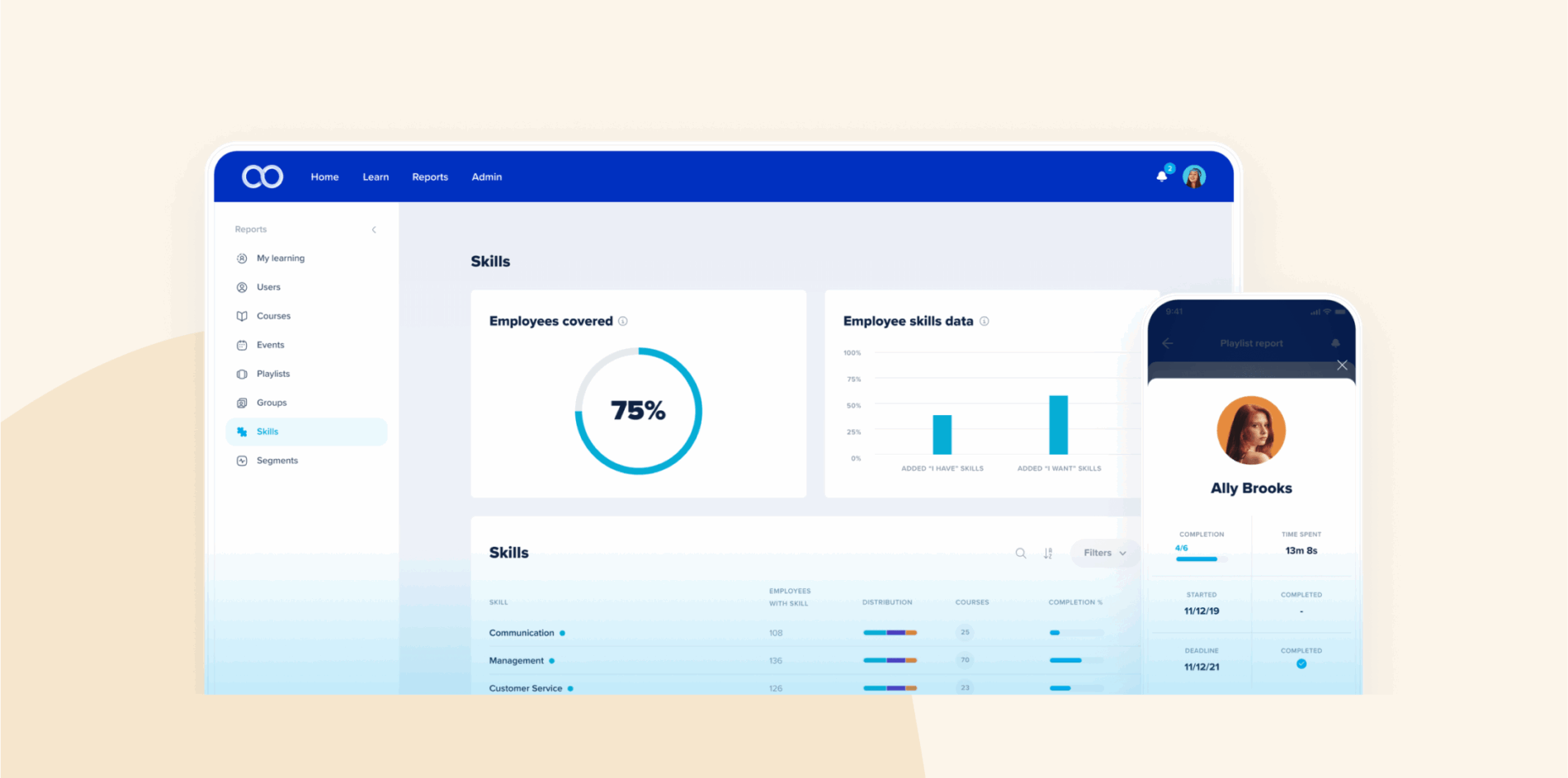
Key features:
- Extensive learning content library with comprehensive, pre-curated courses from trusted global providers
- Scalable learning modules for growing organizations
- Mobile app so team members can access learning materials anytime from their phone (available for both iOS and Android devices)
- Facilitation of larger events and webinars for group learning and collaboration
Ideal for: Building out a learning platform for people development
Explore the Bob-eloomi integration here.
Learn Amp

Learn Amp is a People Development Hub that combines learning, community, and talent development to optimize performance. The platform uses AI to automate busywork and encourage self-led learning from pre-boarding to progression. Its integration with HiBob ensures that learning aligns with broader HR initiatives.
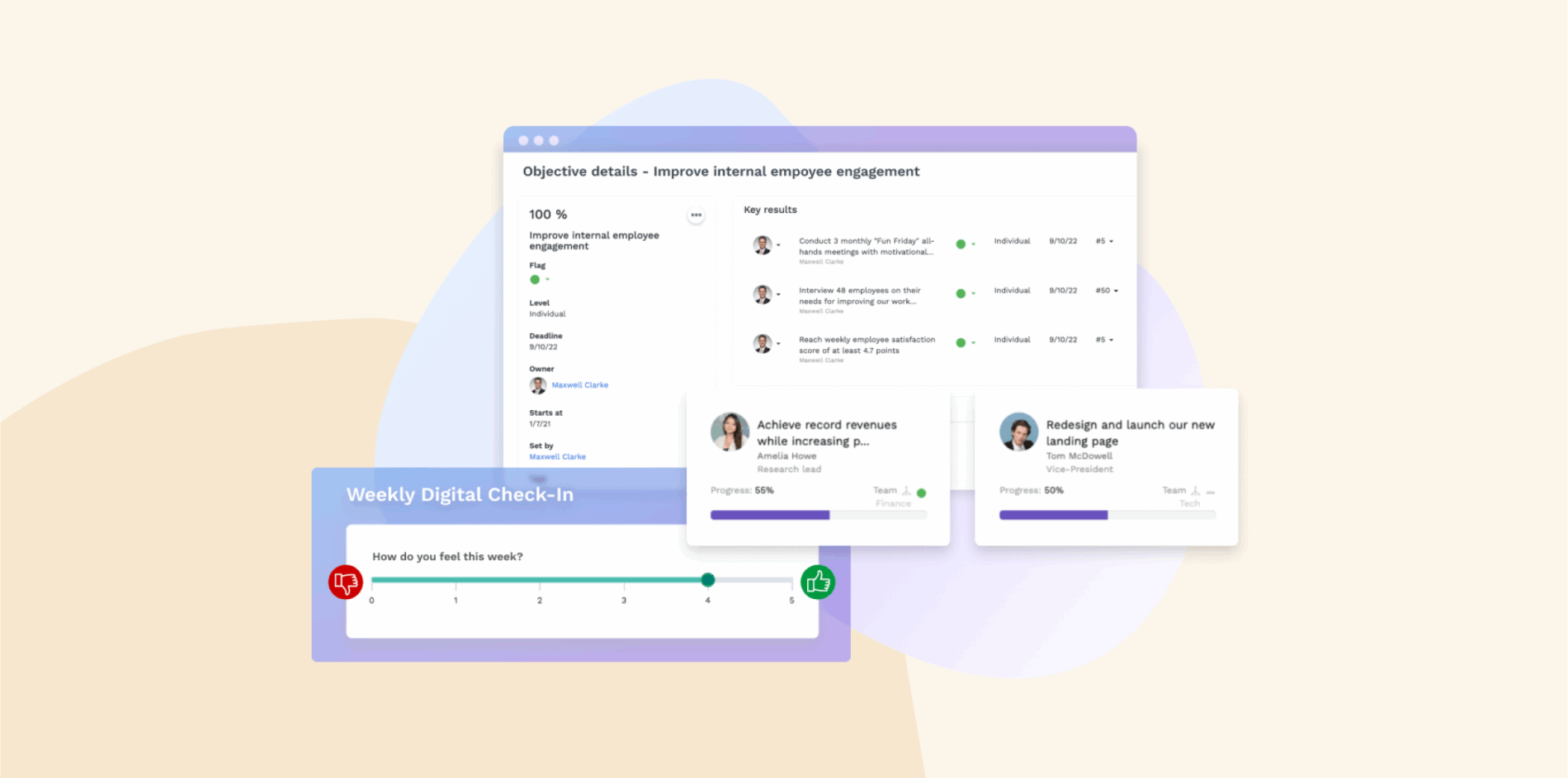
Key features:
- Personalized learning recommendations
- Prompts to generate ideas and content with AI
- Consolidated employee development platform to connect products
- Leadership development resources and community for manager support
Ideal for: Managing multiple people experience systems
Find out more about the Bob-Learn Amp integration.
WorkRamp

WorkRamp is a scalable LMS that uses AI to supercharge learning programs. It offers tools for onboarding, talent development, revenue enablement, compliance training, customer education and community, and partner education. Its HiBob integration automatically syncs HiBob and WorkRamp information, enabling easy management of people data.

Key features:
- Built-in content authoring and creation tools for admins to create engaging, interactive learning experiences
- Supports blended learning styles with various modalities, including elearning, microlearning, and interactive content
- Library of over 85,000 pre-built courses covering a wide range of topics
- Sales and Demo pitch certification courses to identify knowledge gaps and verify skills through video, in-person, and written assessment tools
Ideal for: Supporting customer education, revenue enablement, and compliance training
See the Bob-Workramp integration details.
<< Explore more of the top learning management systems. >>
Future trends in learning management systems
When it comes to LMSs, there are several trends that are shaping learning and development for professionals:
- AI and personalization. AI in LMSs offers personalized learning paths, recommendations, and instant assessments—saving instructors time.
- Microlearning. Attention spans are only getting shorter. Brief, focused content modules will become the norm, catering to learners’ busy schedules.
- Augmented Reality (AR) and Virtual Reality (VR). AR and VR technologies will enhance immersive learning experiences.
- Social learning. Social features within LMSs, such as integration with social media, chat functions, and forums will make it easier for team members to collaborate and share knowledge.
Recommended For Further Reading
Key takeaways
- A learning management system (LMS) is a software that centralizes, delivers, tracks, and manages educational content for training team members, clients, and business partners
- LMSs enhance training efficiency by offering diverse media options such as videos, quizzes, and live courses, which are accessible from anywhere at any time.
- They support HR in job training, onboarding, skills gap analysis, and continuous learning, contributing to professional growth and company success.
- An LMS can include features like user management, course creation, reporting, and mobile compatibility, tailored to the needs of each organization.
- Organizations can choose from various LMS types, including corporate, open-source, cloud-based, and hosted, to align with their goals and infrastructure.
- Emerging trends like AI personalization, microlearning, and AR/VR integration are set to evolve LMS functionalities, offering more engaging and effective learning experiences.
Reap the benefits of a learning management system to improve your company culture
LMSs can play a pivotal role in training an organization’s professionals as well as its customers and business partners. Understanding selection criteria and emerging trends, along with common types of LMSs and their features, will help organizations reap the benefits of learning and development.
Enabling professionals to develop their knowledge and skills can nurture meaning in the workplace, improve their performance, and boost their value to the company. Supporting employee development allows companies to build a learning culture that facilitates business growth while keeping up with the rapidly changing world of work.
